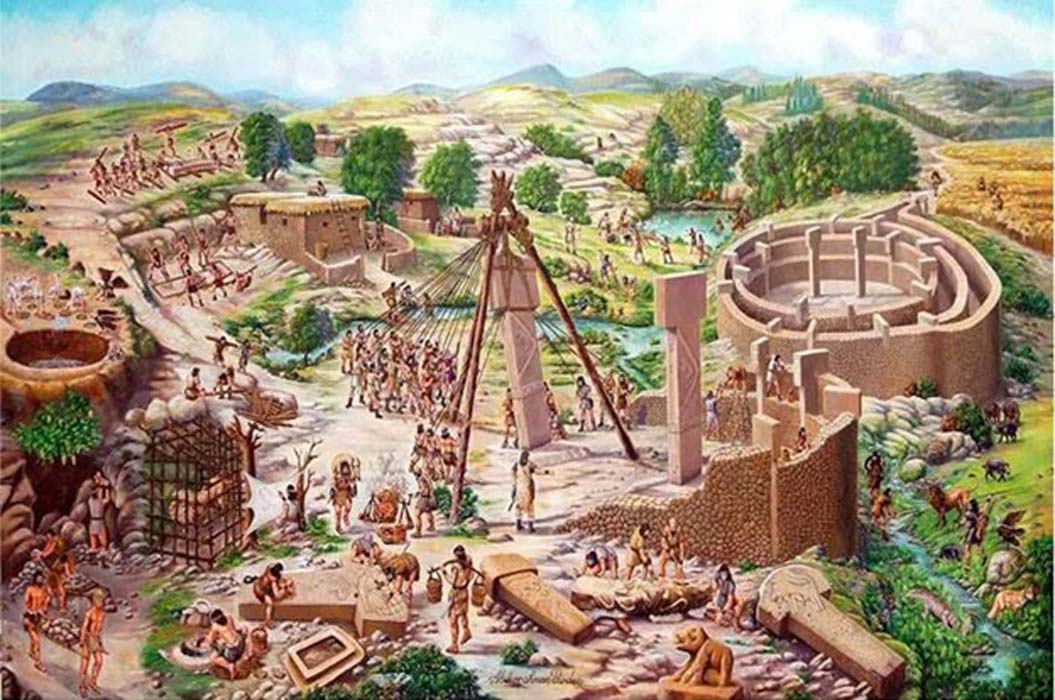Gobekli Tepe is making the rounds again and I thought this is a good opportunity to talk about Glorantha’s equivalent – Hrelar Amali, the “First Temple” of Glorantha. Hrelar Amali was built in the God Time by the Enerali People to mark the place where Flamal the Vegetation King was murdered.
Here’s the entry in the Guide:
The City of the Gods is located on the Crimson Plains between Ralios and Seshnela. It is the spot where Flamal was murdered in the Gods War. For this reason, it is one of the most sacred spots in all Genertela.
Hrelar Amali served as a temple to the Nine Great Gods. At Flamal’s death, the Enerali people built a temple to him, and added a temple to Ernalda and one to Xentha, who carried off Flamal’s body, to appease the Nine.
To guarantee the place’s sanctity, the priests never worked, and were given food and other necessities by the gods themselves. The place’s sacred quality was also maintained by oaths which protected any pilgrims and priests while there, or on the way, so long as they wore the yellow robes. There was always a mouthpiece for the temple, who acted for any god who was in charge at the time. He was called “Chief of the Court”, and was created by the rulers of the Spike itself from their blood.In 180, the Theyalan Lightbringers revealed at Hrelar Amali that Orlanth was another name for Humat, the most powerful of the Nine. A generation later, the Seshnegi gave great gifts to Sramak, so they might placate the waters. Later, temples to many lesser gods were added.
From its glory it fell to the corruption of a particularly vile form of magic called Vadeli sorcery and the temple remains in ruins to this day.

![]()
![]()
At the Dawn the four tribes of the Enerali (Korioni, Uton, Fornaoli, and Vustri) formed the Dangan Confederacy. They lived from hunting, horse-herding, and the bounty of Mata and Flamal (mixed hunter-gatherer and neolithic farming). They use digging sticks to till the rich soil around Lakes Ehilmka and Felster. They lack all but the crudest metal-working (except for gold which they hammered into ornate jewelry), but make their tools from stone and bone (they later traded with the Seshnegi for metal goods and later learned bronze-working from the Theyalan Missionaries).
The Enerali use stone axes and bows in war and their chiefs fight from chariots pulled by their sacred Galanini ponies. Horses are especially sacred animals to the Enerali, who eat their meat as part of their religious festivals. The Enerali ride horses when they hunt the abundant wild horses along Lake Felster’s shores; they did not initially fight other peoples from horseback (but from the stable platform of a horse pulled chariot). Fighting from horseback became increasingly common once the Enerali were forced to defend themselves against Seshnegi heavy cavalry.
The priests of the Dangan Confederacy serve as judges for all disputes between the clans, although the clans themselves are govern by their chiefs. The Dangan priests perform an annual horse sacrifice at Hrelar Amali, with horse races, a chosen scapegoat who is driven out of their lands, dancing and singing, and an elaborate feast joined by all the gods and goddesses.
Now about a decade or so ago, Greg went to Gobekli Tepe and Greg ended up giving me a stack of books on it. So when we think of Hrelar Amali, it is right to have Gobekli Tepe on the brain.
